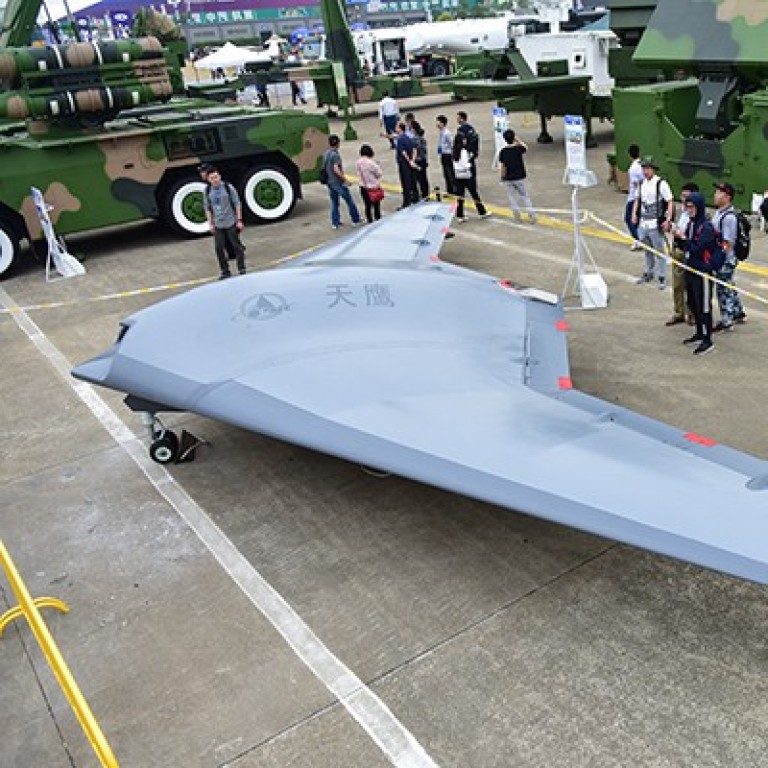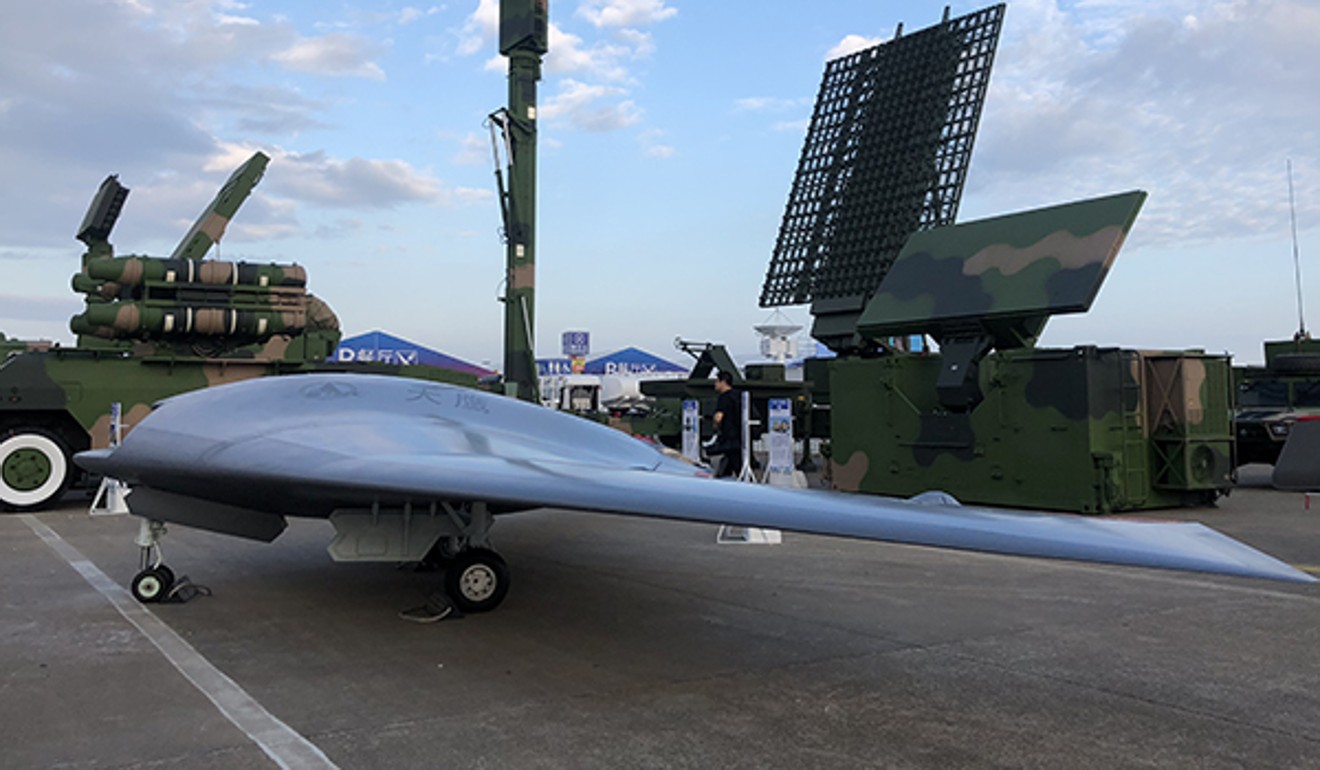
China’s Sky Hawk stealth drone has capability to ‘talk’ to fighter pilots, developer says
- Manned-unmanned teaming technology allows aircraft – with or without pilots – to communicate and collaborate during surveillance and combat operations
- But despite claims, system is still only in development stage, expert says
One of China’s newest stealth drones, the Sky Hawk, features state-of-the-art technology that allows it to communicate and collaborate with manned aircraft during surveillance and combat operations, its developer said.
Known as manned-unmanned teaming (MUM-T), the technology means pilots and ground staff can receive information from drones to improve their situational awareness while allowing them to remain at a safe distance.
China’s latest stealth drones go on display at Airshow China 2018
“Battlefields of the future will be very intense and confrontational, and stealthy drones like the Sky Hawk will have a huge role to play,” Ma Hongzhong, its chief engineer at China Aerospace Science and Industry Corporation, told news portal Thepaper.cn on Thursday.
“Manned-unmanned teaming is the technology of the future … and the Sky Hawk has such a capability,” he said.
Despite Ma’s claims, Singapore-based aviation expert Kelvin Wong said that while MUM-T was a major development trend within the global industry the technology had so far eluded most nations.
The idea of the system is that it allows drones to communicate not only with each but also with manned aircraft, he said, but “that requires precise flight command and control, and high-speed, high-volume data sharing … to name a few of the core technologies”.
“So far, no country has perfected it as far as I am aware.”
China fills gap left by US in Middle East military drone market, British think tank says
So whether China actually had the know-how to apply MUM-T technology on the battlefield had yet to be seen, Wong said.
Beijing based military expert Li Jie said that in a combat situation, having aircraft capable of manned-unmanned teaming would make finding targets “easier and faster, increase the range of attack and reduce casualties”.

According to the United States’ government contractors website, the US army is currently investigating the products, research, operational concepts and mission support that could enhance existing MUM-T concepts.
In October, US-based website Avionics.com reported that Textron Systems had developed a new command and control collaboration technology known as Synturian that gave military pilots the ability to control teaming drones with just a few inputs from a cockpit display.
China, Pakistan sign deal to build 48 strike-capable Wing Loong II drones
In April, Airbus said its H-145M helicopter had successfully completed MUM-T capability tests using the S-100 unmanned air system developed by Austrian defence company Schiebel.
With its flying wing design – similar to the United States’ B-2 stealth bomber – the Sky Hawk is a high-altitude, long-range and high-speed unmanned aerial vehicle capable of conducting reconnaissance and patrol missions in hostile environments.
Footage of its latest test flight was shown by China’s state broadcaster CCTV on Saturday. The report did not give a precise location but showed the drone taking off and landing against a backdrop of high mountains.
There have been reports of the Sky Hawk carrying out test flights as early as February last year, but no footage has ever been released.
The drone went on display at Airshow China 2018 in Zhuhai, south China’s Guangdong province, in November, but remained firmly on the ground.
Chinese solar-powered drone Morning Star spreads its wings in successful test flight

